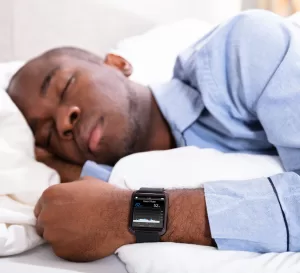
Technological innovations improve our quality of life and make things easier. Sharing information, preparing meals, cleaning clothes, and transporting are all things we do with the help of technology. We rely on technology in our daily lives.
Technology impacts our lives in various areas, including communication, education, problem-solving and decision-making, healthcare, and business. Therefore, there is no denying that technology is advancing rapidly today, and we should embrace and utilize it.
In this blog, we’ll take a closer look at how smart home technologies improve our sleep quality.
Smart Home Technology
Smart home technology is a network of intelligent household devices designed to automate the things homeowners use every day, such as appliances like washing machines, refrigerators, and garage door openers; entertainment systems; security systems; and environmental controls like air conditioning and lighting.
With a single Wi-Fi-connected device that allows the user to control the functions and works with a device called a “smart home hub” that serves as a central point in the network, these technologies simplify life and promote energy efficiency, security, comfort, and style. It allows the user to fully control all their smart home devices and create preferences and schedules.
Types of smart home technology
Smart solutions that automate and simplify your life include the following:
- Lighting Systems
- Heating & Air Conditioning Systems
- Security Systems
- Entertainment Systems
- Wi-Fi Systems
- Automated Blinds & Curtains
- Home Cinemas
- Garden Technology
Smart Home Technology helps to get a better night of sleep
Smart home technology can help create a better sleeping environment that helps you wake up fresh and ready to tackle and achieve your daily goals and activities.
Some of the devices to help sleep better include:
- Voice controller
The Alexa Smart Home is a device with a voice-controlled user interface for the home that can meet a variety of customer needs. It also integrates with a wide range of smart home devices. For example, customers can ask Alexa to turn on a lamp, turn on the fan, dim the lights, or raise the thermostat.
A new Amazon Alexa device can help you sleep better at night. For example, to block out annoying traffic noise, sirens, and other sounds that can wake you up at night, it can play white noise, rain sounds, and thunderstorm sounds. Alexa can also help you sleep with the Guided Sleep Meditation skill. It can help you relax, calm your thoughts, and fall asleep easily.
- Motion detection devices
A motion detector is a type of electronic device used to track and detect movement. In addition to telephones, paper towel dispensers, game consoles, and virtual reality systems, they are used primarily in residential and commercial security systems.
There are two types of motion sensors:
- active motion sensors (They have both a transmitter and a receiver),
- passive motion sensors (They haven’t a transmitter, only a receiver).
There are many different types of motion detectors on the market, and each of them has advantages and disadvantages. Some of them are PIR, radar sensing, ultrasonic, microwave, tomographic, and combined variants.
PIR sensors (Passive Infrared Sensors) use the detection of infrared radiation emitted by all objects that radiate heat.
A radar sensor is a state-of-the-art motion detector that uses radar technology that transmits and receives radio waves.
Radar sensing is an effective motion detection technology that improves the quality of our sleep.
An ultrasonic sensor is an electronic device that measures the distance of a target object by emitting ultrasonic waves and converting the reflected sound into an electrical signal
- Temperature controller
A temperature thermostat is a device in which the measurement process directly directs the control function of an automatic device for temperature control.
Thermostats that improve our ability to sleep at night include the Amazon Smart Thermostat, Nest Thermostat, Honeywell Focuspro, and other cutting-edge gadgets. If your bedtime varies from day to day, a smart thermostat can be programmed to automatically lower the temperature in your home at night.
- Sleep Tracking devices
A device that monitors a person’s sleep is called a sleep tracker. Special sleep monitors, trackers that attach to pillows, cell phones, fitness trackers, smartwatches, and other wearable technologies are examples of devices that monitor a person’s sleep.
Although sleep monitoring devices include a variety of features, some are common:
- Sleep duration
- Sleep quality
- Sleep phases
- Environmental factors
- Lifestyle factors
Some of the innovative sleep tracker devices are Apple Watch, Withings, Oura-Ring, and other devices that are very helpful in this case.
Sleep trackers can be a very helpful tool for smart home technologies to determine how your behaviors, such as using the sleep technology mentioned above, are affecting your sleep.
Conclusion
Technology is changing our lives. Of course, it has both advantages and disadvantages, but our daily lives are made easier with the use of technological devices. Some of the smart devices that help us sleep better are voice and temperature controls, sleep monitoring devices, and motion detectors such as PIR sensors, ultrasonic, and radar sensors.
The tech devices are different: lighting, heating and air conditioning systems, security systems, entertainment, and Wi-Fi systems, home theater, and garden technology.







